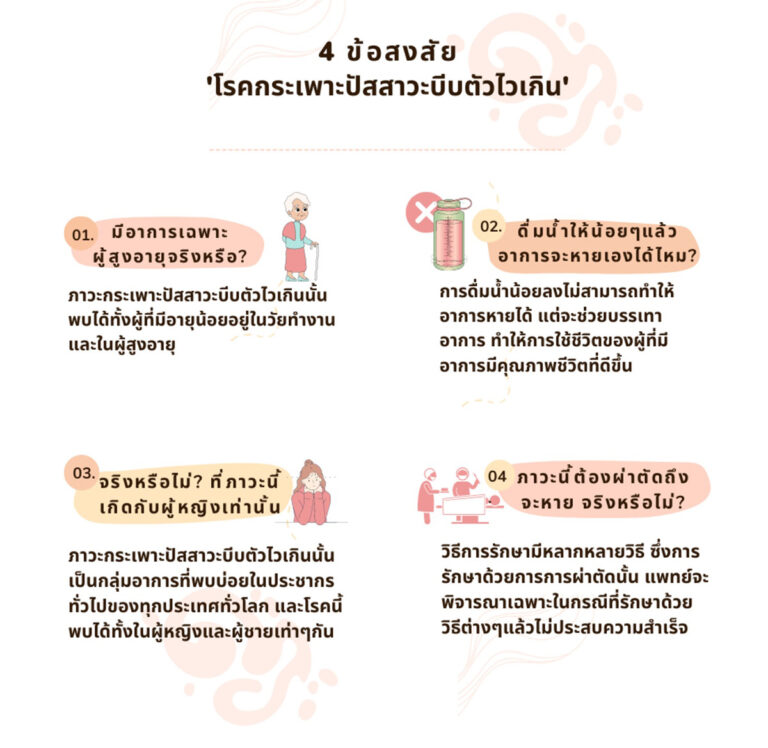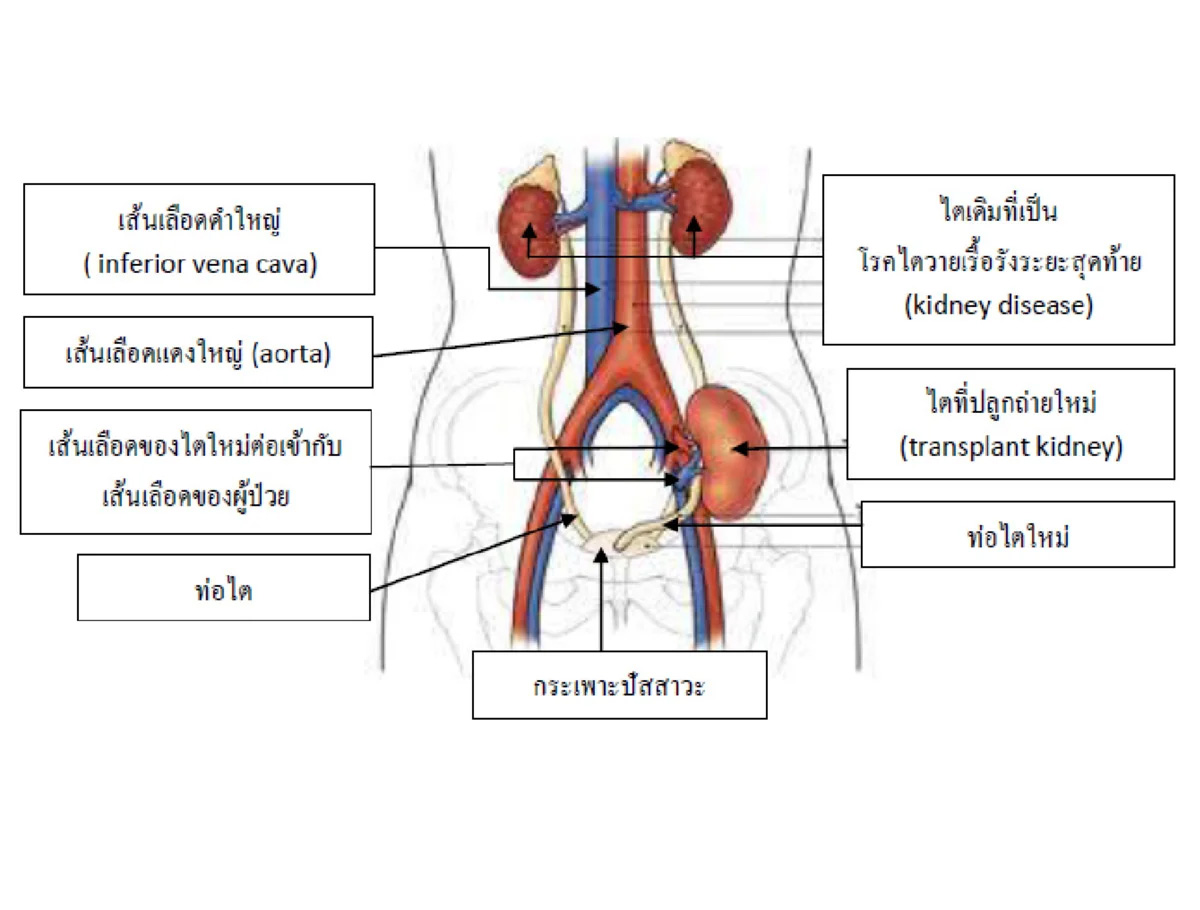Overactive bladder (OAB), commonly known as ‘bladder weakness,’ is a condition where the cause is not precisely known in the medical field. It is believed to result from abnormalities in the muscles of the bladder or from a malfunction in the nervous system that controls the bladder’s function. This dysfunction prevents the normal control of the bladder muscles, leading to involuntary contractions that are faster than usual. While not life-threatening, these causes may result in symptoms similar to more severe conditions, such as bladder cancer, kidney stones, or urinary tract infections. Therefore, if you experience urinary symptoms, it is crucial to seek medical attention promptly rather than dismissing them.
4 Symptoms Indicating 'Overactive Bladder'
Overactive Bladder (OAB) is a set of abnormal symptoms affecting the lower urinary tract, impacting the quality of life due to sudden urinary urgency and includes 4 symptoms:
- “Painful Urgency” (Urgency) refers to the sensation of a sudden and intense desire to urinate that occurs abruptly and is so severe that it cannot be delayed. Normally, people can voluntarily hold back urine and delay the act of urination.
- “Frequent Urination” (Frequency) means having more episodes of urination than usual, specifically more than 8 times within a 24-hour period.
- “Unable to Hold Urine or Urge Incontinence” (Urge incontinence) refers to the involuntary leakage of urine due to a sudden, uncontrollable urge to urinate, often associated with a sudden feeling of pain during urination.
- “Frequent Nighttime Urination” (Nocturia) refers to waking up from sleep to urinate one or more times after going to bed.
These 4 symptoms should give priority to the urgency symptom, which is a crucial symptom, as it has the most significant impact. It may be accompanied by urge incontinence, and often includes frequency and nocturia. These collectively indicate an Overactive Bladder (OAB) condition, which can greatly affect the quality of life for the patient.
Question about 'Overactive Bladder (OAB)'
For Overactive Bladder (OAB), there may be some points of confusion and misconceptions. These are generally common issues that often lead people to overlook or forget to observe themselves for possible symptoms of OAB, thinking that minor symptoms are not significant enough to seek medical attention. This can result in the progression of the condition and the development of more severe symptoms.

Is it common only in the elderly?
In fact, Overactive Bladder (OAB) can occur in individuals of various age groups, including those who are relatively young and still in their working age. However, it is more frequently observed in older individuals, especially those aged 40 and above. Therefore, individuals in their working age should also be aware of the symptoms of this condition and not overlook them.
Will reducing water intake make the symptoms go away?
As mentioned earlier, Overactive Bladder (OAB) results from abnormalities in the muscles of the bladder or from a malfunction in the nervous system that controls bladder function. Therefore, reducing water intake is unlikely to make the symptoms disappear. However, avoiding drinking water before bedtime and before going out, as well as steering clear of beverages that stimulate urination, can help alleviate the symptoms and improve the quality of life for individuals experiencing them.
Is Overactive Bladder (OAB) only common in women?
No, Overactive Bladder (OAB) is a group of symptoms that is commonly found in the general population worldwide. It can affect both men and women equally and is prevalent in about 14% of the general population. Therefore, men should not overlook this condition, and it can occur in both genders.
Does this condition require surgery to be cured?
Overactive Bladder (OAB) can be treated with various non-surgical methods. Surgical intervention is considered by physicians in cases where other treatment methods have not been successful. If you are concerned about surgery, rest assured that it is not the only option. If you suspect that you may have Overactive Bladder or related urinary issues, it is advisable to consult with a healthcare professional promptly. Don’t wait until the symptoms become severe.
Overactive Bladder (OAB) has significant impacts on daily life
Overactive Bladder (OAB) has significant impacts on daily life, although it may not be life-threatening. The symptoms of this condition affect various aspects of daily functioning, such as:
- Frequent urination and urgency: This leads to a reduction in work efficiency, especially when one has to take frequent breaks to use the restroom. Daily activities, particularly during busy or long commutes, may become challenging, causing individuals to avoid leaving their homes and limiting their social interactions. It can eventually lead to feelings of isolation and even contribute to the development of depression.
- Urge incontinence: Leakage of urine can result in embarrassment, a lack of confidence in social situations, and potential family problems.
- Nocturia (waking up at night to urinate): Frequent disruptions during sleep can lead to inadequate rest, impacting both physical and mental health. It can cause irritation, discomfort, and distress for the affected individual.
The treatment for Overactive Bladder (OAB) is not limited to surgery.
Currently, there are various treatment options available depending on the severity of the condition:
- Reducing excessive fluid intake. Avoiding water intake before bedtime and before going out. Steering clear of beverages that may stimulate urination, such as alcohol, tea, and coffee. Avoiding delaying urination for an extended period.
- This involves exercises to strengthen the pelvic floor muscles, particularly the muscles around the urethra. Proper guidance from a healthcare professional is essential to ensure effective training.
- Antimuscarinic drugs and beta-3 agonists are commonly used medications to treat OAB. They help reduce the overactivity of the bladder muscles, improving symptoms. However, these medications may have side effects, such as dry mouth, dry eyes, constipation, and, in some cases, abnormal heart rhythm or drowsiness. Consulting a doctor before using these medications is advisable.
- Electrical stimulation and injections of botulinum toxin A into the bladder muscles have shown positive results, especially in patients resistant to other treatments.
- Surgical procedures are considered when other treatment methods have been unsuccessful. These interventions are reserved for specific cases and may include various approaches.
It’s important to note that Overactive Bladder is a treatable condition, and surgical options are not the only solution. Seeking medical advice, exploring non-invasive treatments, and making lifestyle modifications can significantly improve the quality of life for individuals with OAB.






